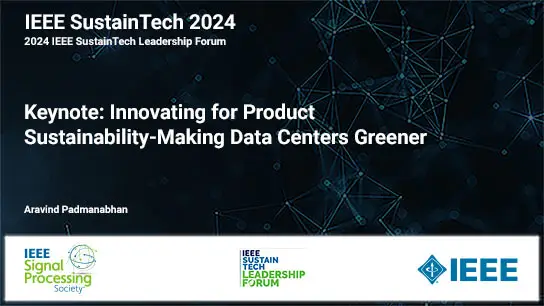Industry Keynote: IKN-3: Volker Ziegler - "The Terahertz Age: Sensing, Communications and Signal Processing"
Dr. Volker Ziegler: Chief Architect and Senior Advisor, Nokia Corporation
-
Members: FreeSPS
IEEE Members: $11.00
Non-members: $15.00Length: 01:04:46
26 May 2022
Abstract Nokia�??s strategic focus areas for sustainable leadership in wireless include high performing radio solutions, leadership in 5G Standalone and 5G Advanced, common software delivery and leadership in cloud technology. 5G Advanced will provide new usage areas and services with boosted resilience and operability. 5G is at the beginning of a long evolutionary journey and, at the same time, 6G is on the horizon to open up opportunities with novel services. While 6G research activities are in full swing, 6G commercial product availability is not expected earlier than 2029/30 time frame. 6G will be the essential infrastructure and platform for communications in the 2030s. Use cases of the 6G era will include immersive telepresence, twinning, collaborating robots and mixed reality co-design, creating a 6th sense and specialized trusted networks. These use case families will help the world act together, liberate human potential and drive economic, societal and environmental sustainability. Key 6G technologies will include AI-native air interface, new spectrum technologies and extreme connectivity, network-as-a-sensor, security, privacy and trust as well as elements of architectural transformation. These key technologies will be needed to comply with the requirements for the use cases of the 6G era. Significant capacity increases will be a prerequisite for many of these use cases and can be achieved from mid-band spectrum combined with extreme MIMO antenna arrays at base stations. This can potentially provide around 20x more capacity compared to basic 5G in the 3.5 GHz band when using four times more spectrum per cell and achieving five times higher spectral efficiency. Such a major boost in site capacity will meet annual mobile traffic growth of 35% for 10 years without substantial site densification. Also, extreme communications requirements in terms of throughput, latency and reliability will be needed. In this talk, our vision for short-range, low power 6G �??in-X�?? subnetworks will be shared, with the �??X�?? standing for the entity in which the cell is deployed such as a production module, a robot, a vehicle, a house or even a human body. Such cells can support services that can be lifecritical and that with previous Gs relied on wired systems. With sub-THz bands in 6G, small cell deployments will begin to dominate. Large bandwidth systems deployed in small cell configurations provide the opportunity to employ the mobile network for sensing purposes. In this talk, we describe selected design aspects of such a cellular joint communication and sensing (JCAS) system. Clearly, advances in signal processing and signaling messages at all layers of the protocol stack will be critical enablers with AI/ML technologies showing great transformational enabling potential. Pre-competitive joint 6G research and collaboration will help drive the joint global agenda of research and dissemination; an update on the EU 6G flagship project Hexa-X will be included in this talk.



